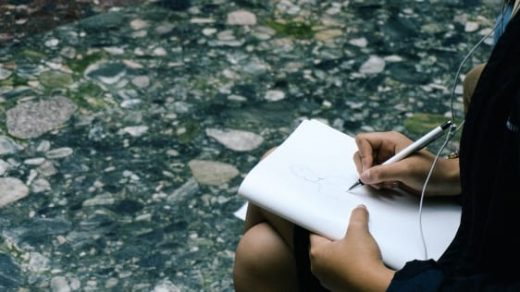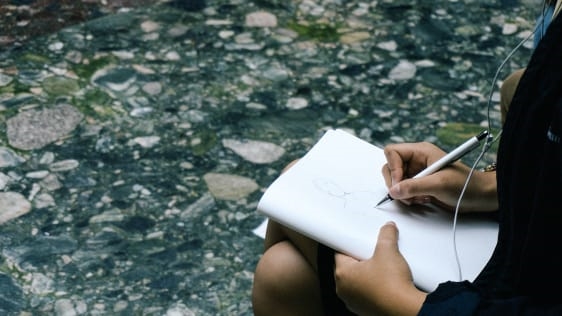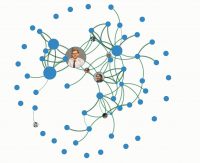These Short Exercises Can Get Your Whole Team To Think Creatively
Ever try rushing from a solo project into a team brainstorm? Switching gears on the fly isn’t easy–even when the thing you were doing alone is just as much a creative task as the thing you’re suddenly try to do in a group.
Ayse Birsel understands why. “When we’re working alone, it’s more contemplative. You only have you and your ideas, and there’s not somebody else there to judge you,” says the cofounder and creative director of design studio Birsel + Seck. In collaborative environments, she points out, “It can get competitive [and] really chaotic,” so it’s smart to “let people know ahead of time that the process could get messy, so trust the process.”
How do you prepare people for creative collaboration, though? Birsel has a few warm-up techniques up her sleeve. Here are three of them, none of which take longer than three minutes.
1. Draw Each Others’ Portraits
This is an exercise Birsel picked up at Pratt Institute, where she earned her master’s degree in design. “The very first class, our teacher asked us to turn to each other and draw each other,” she recalls. “It’s a great ice-breaking exercise that I’ve been using in almost every workshop I teach, especially with people who don’t know each other.”
Birsel sets only two ground rules:
- “You have only three minutes.”
- “Eyes go in the middle of the face, but you can put everything else wherever you like.”
Above all else, she says, “It gets people to laugh! You are butchering each other’s portraits.” Any worries that the chaotic nature of the collaborative work that follows will be a waste of time tend to go right out the window, and people who might feel intimidated by group work have usually loosened up when the exercise is over.
2. Introduce Yourself, And Then Your Emotions
Birsel credits another technique she constantly uses to her friend Laura Dye, who until recently was Nike’s director of global organization effectiveness. It’s a more emotionally intelligent riff on the annoying, “Let’s go around the table and have everyone introduce themselves.”
Instead, Birsel instructs participants, “Say your name, one sentence about what you do, and what you’re feeling at this moment.” Yes, this can be uncomfortable, but Birsel has found it succeeds at getting all kinds of emotional content–including that discomfort–out in the open right from the start.
“That gives people an opportunity to vent,” she explains. “Some people are stressed–they were late, they came from a bad meeting, they’re hungry, whatever. There are other people who are excited, happy–and it gives them an opportunity for positive emotions to come out as well.”
3. Tap YouTube For Inspiration
As a third way to set the stage for creative teamwork, Birsel recommends showing a short film clip or video.
“You’re almost priming them for the subject,” she explains. “Usually it’s a film that’s inspiring, beautiful, and related to your topic–but not exactly on topic.” Birsel, who is also the author of Design the Life You Love: A Step-by-Step Guide to Building a Meaningful Future, is often asking “people to think differently about work.” To nudge them into that mind-set quickly, she uses a clip from an episode of the Netflix series Chef’s Table, in which Argentine chef Francis Mallmann “cooks in the wild–just a minute and a half of it,” Birsel explains. “He’s so joyful about his work, not what you’d expect from a chef who doesn’t have a kitchen.”
Then, Birsel says, “I’ll get people to talk about what they saw in the film–‘Oh, how joyful he is,’ or, ‘Francis is inventing new techniques’–and it gives me a chance to say, ‘Okay, what you just did is you deconstructed the film we just watched.’” That quickly clears the way for team members to think deconstructively–and creatively–about something else.
How do you find the right clip to do something similar? “A lot of us watch stuff on Facebook,” Birsel adds, “so what I would recommend is [to keep] a little file of films on the side,” dropping new links and video files into your folder whenever you come across something related to the kinds of creative challenges your team tackles.
The key to creative thinking in group settings, she believes, is establishing “that person-to-person connection” right away, before trying to do anything else. Doing creative work alone, Birsel emphasizes, is “one-way–it’s a monologue. When you’re collaborating, it’s got to be a dialogue.”
Fast Company , Read Full Story
(25)














